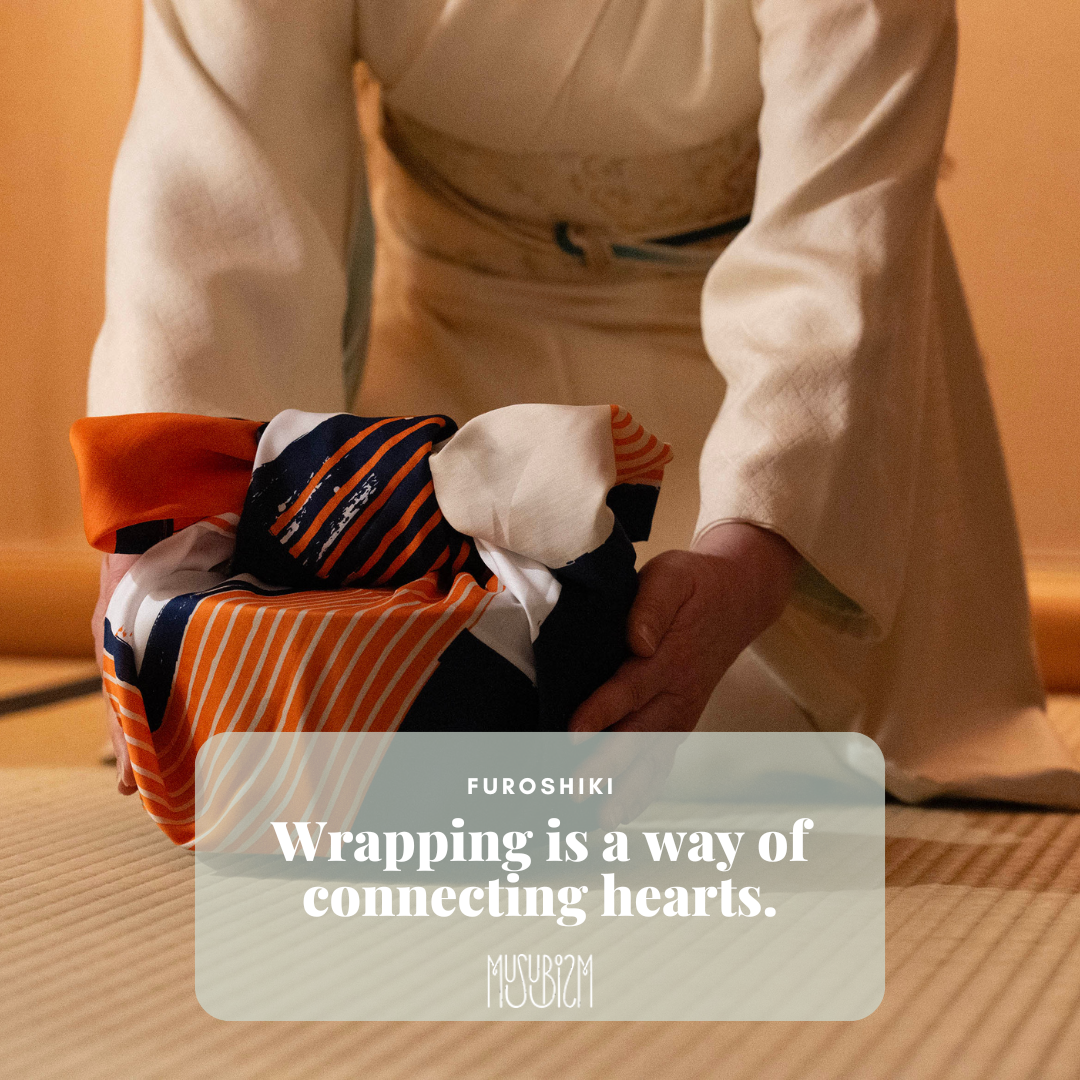
Wrapping is a Way of Connecting Hearts
— Furoshiki and the Beautiful Threads of Japanese Culture —
Furoshiki is more than just a cloth used for wrapping objects.
It represents a culture of "wrapping the heart" that has long been cherished in Japan.
To unfold, to wrap, and to tie—
At first glance, these may seem like simple gestures. But each movement carries with it the feelings of the giver.
When a furoshiki is gently spread out, it is as if one is preparing to wrap their thoughts and care for someone else.
And when it is tied with a firm knot, a wish is gently sealed within:
“May it arrive safely.” “May it bring joy.”
These are silent prayers, crystallized in every knot.
This act of wrapping and tying is deeply connected to the world of tea ceremony.
In a tearoom, each quiet gesture expresses unspoken respect and thoughtfulness.
Furoshiki, too, becomes a medium for silent communication—heart to heart, without the need for words.
You can wrap anything in a furoshiki.
A gift, a personal item, or even something simple from everyday life—once wrapped, it transforms into a vessel of intention and care.
And when the knot is untied, that feeling is released, softly reaching the recipient's heart.
Furoshiki also embodies the spirit of mottainai—the idea of not letting things go to waste.
It is a sustainable, reusable item that can be used again and again, passed down through hands and time, carrying with it memories and sentiment.
It is a way of showing gratitude not only to people, but also to the natural world and its resources.
There is another beautiful value woven into the fabric of furoshiki: go-en.
This uniquely Japanese word refers to the invisible threads that connect us—chance encounters, meaningful relationships, and heartfelt moments.
Every time we wrap with furoshiki, we are not only protecting what’s inside—we are also gently tying these unseen threads that bind us to one another.
In a world where sustainable living and emotional connection are increasingly valued, furoshiki has emerged not as a relic of the past, but as a refreshing and timely tradition.
So—what feelings did you wrap today?
Perhaps the furoshiki you tied with care is already connecting you to someone, quietly and gently.
And that connection—we call go-en.
